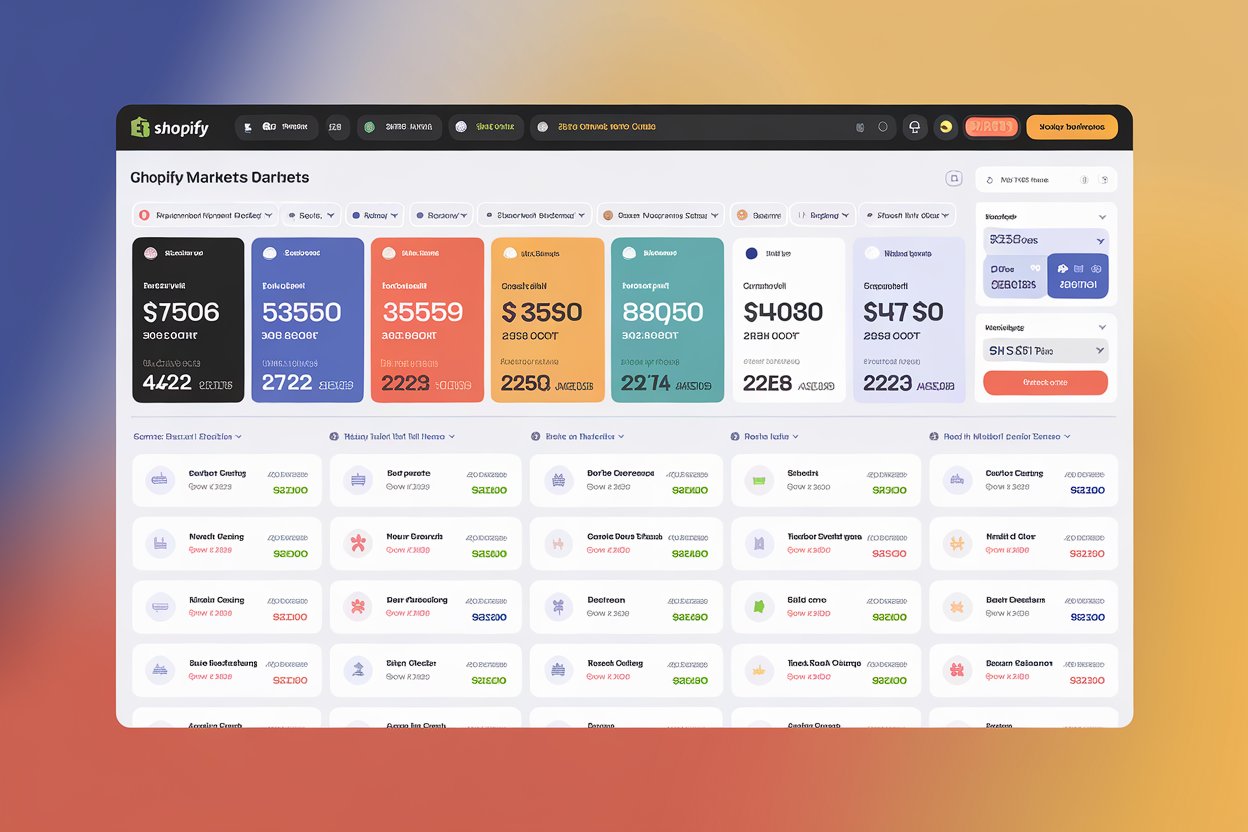In today’s interconnected world, Shopify Markets for Managing B2B and Global Stores emerges as a vital tool for businesses seeking to expand their reach and streamline operations. This innovative platform allows companies to effortlessly manage multiple storefronts, catering to diverse customer bases across various regions. Whether you’re a seasoned entrepreneur or just starting, understanding how to leverage Shopify Markets can significantly enhance your business capabilities. If you’re looking to enhance your Shopify experience, consider hiring a Shopify web developer to assist in setting up your store for optimal performance.
What is Shopify Markets?
Shopify Markets is a feature designed to simplify the management of global and B2B (Business-to-Business) operations. It allows merchants to create localized storefronts tailored to specific markets, ensuring that they can effectively meet the needs of diverse customer segments. By utilizing Shopify Markets, businesses can:
- Localize Content: Adapt language, currency, and product offerings to align with regional preferences.
- Centralize Management: Manage all storefronts from a single dashboard, reducing the complexity of overseeing multiple sites.
- Enhance User Experience: Provide a tailored shopping experience that resonates with local audiences.
This functionality positions Shopify Markets as a comprehensive solution for businesses looking to thrive in a global landscape.
Benefits of Using Shopify Markets
A. Streamlined Global Management
Shopify Markets eliminates the hassles typically associated with running multiple stores. Here are some key advantages:
- Unified Dashboard: Access all your stores from a single interface, simplifying oversight and management.
- Automated Currency Conversion: Automatically display prices in the local currency, enhancing customer trust and satisfaction.
- Localized Shipping Options: Offer tailored shipping methods that cater to specific regions, improving the overall shopping experience.
B. Simplified B2B Operations
For B2B businesses, Shopify Markets brings additional benefits:
- Bulk Order Management: Easily manage and fulfill large orders from business clients.
- Customer Segmentation: Segment customers based on their purchasing behavior and location, allowing for targeted marketing efforts.
- Custom Pricing: Set different pricing structures for different customer segments, ensuring competitive advantages.
How to Set Up Shopify Markets
Setting up Shopify Markets is a straightforward process. Follow this step-by-step guide:
A. Step-by-Step Guide
- Create Your Shopify Account: If you haven’t already, sign up for a Shopify account.
- Navigate to Settings: In the Shopify admin, click on “Settings” and select “Markets.”
- Select Your Markets: Choose the regions you want to target. Shopify provides a list of suggested markets based on your current sales data.
- Configure Local Settings: Set local currencies, languages, and shipping options for each market.
- Customize Your Storefronts: Tailor your product offerings, descriptions, and pricing to align with local preferences.
- Launch Your Stores: Once configured, launch your localized stores to start reaching new customers.
By following these steps, you can effectively leverage Shopify Markets to expand your reach.
Common Challenges and Solutions
While Shopify Markets offers numerous benefits, businesses may encounter specific challenges. Here are some common issues along with their effective solutions:
Challenge: Difficulty in Managing Multiple Currencies
Managing transactions across various currencies can be overwhelming for many businesses, leading to confusion and potential revenue loss.
Solution:
Utilize Shopify’s automated currency conversion feature to simplify transactions. This tool allows your store to automatically display prices in the local currency based on the customer’s location, enhancing user experience and reducing cart abandonment.
Challenge: Language Barriers in Customer Support
Language differences can hinder effective communication with customers, leading to dissatisfaction and lost sales.
Solution:
Implement multilingual customer service solutions to assist customers in their preferred language. Consider using chatbots that support multiple languages or hiring customer support representatives fluent in key markets. This ensures that all customers receive the assistance they need, fostering loyalty and trust.
Challenge: Complex Logistics for Shipping
International shipping can involve complex regulations and costs, making it a significant challenge for global operations.
Solution:
Partner with reliable shipping providers that understand the intricacies of international logistics. Look for providers that offer competitive rates, timely deliveries, and expertise in customs regulations. Additionally, consider integrating shipping solutions directly within Shopify to streamline the process and provide customers with real-time tracking updates.
Challenge: Compliance with Local Regulations
Operating in different regions means navigating various legal and tax requirements, which can be daunting.
Solution:
Stay informed about the local regulations in each market. Utilize Shopify’s built-in compliance features, and consider consulting with legal experts or local partners to ensure that you meet all necessary requirements, including tax regulations and consumer protection laws.
FAQs
Q1: What types of businesses can benefit from Shopify Markets?
A: Shopify Markets is ideal for both B2B and B2C businesses that want to expand their global presence and manage multiple storefronts effectively.
Q2: Can I customize my storefront for each market?
A: Yes, Shopify Markets allows you to tailor your storefront with localized content, pricing, and product offerings for each market.
Q3: Do I need a developer to set up Shopify Markets?
A: While it’s possible to set it up yourself, hiring a Shopify web developer can help optimize your store and ensure a seamless configuration.
Q4: How does Shopify Markets handle shipping?
A: Shopify Markets enables you to configure shipping options specific to each market, improving the overall customer experience.
Q5: What are the costs associated with using Shopify Markets?
A: While there are no additional costs specifically for Shopify Markets, standard Shopify subscription fees and transaction fees may apply.
Conclusion
Shopify Markets stands out as an essential tool for businesses looking to expand their B2B and global operations. With its ability to streamline management and enhance the customer experience, it’s no wonder that many businesses are turning to Shopify Markets to grow their reach. For those interested in maximizing their Shopify experience, consider investing in Shopify Development Services to fully capitalize on this powerful platform.
